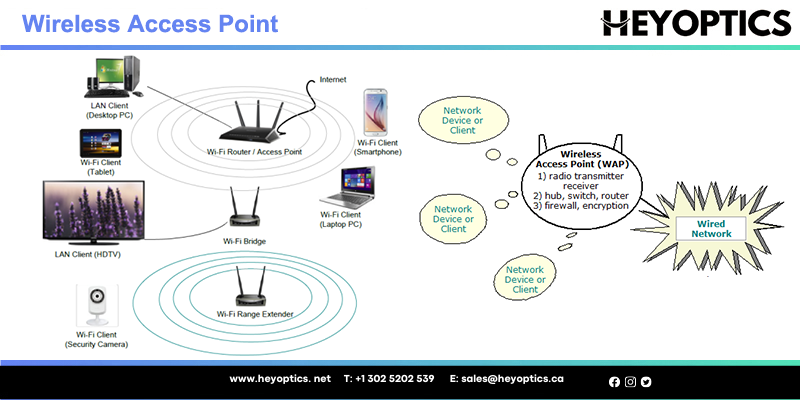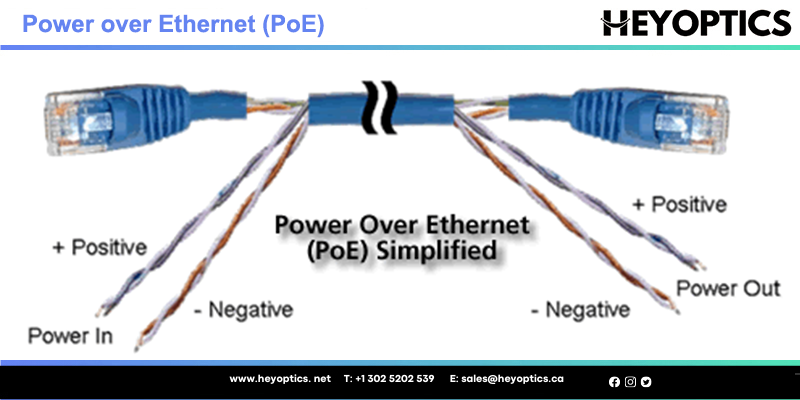How To Choose A Wireless Access Point?
In recent years, the development of science and technology has made people’s demand and dependence on the Internet more and more. Wireless access points are smaller and easier to install and maintain.
Now since the intelligent mobile phone is more and more convenient, people have stronger and stronger demands for the Internet. As a result, the programs of wireless coverage have been increasing. At the same time, many people are confused about choosing a wireless access point (WAP). This article summarizes some tips for you to consider when choosing a WAP.
What are wireless access points?
A wireless access point is a device used to create a WLAN. Businesses in large offices or buildings often use wireless access points. This device is connected to an internet hub, wired router, or switch using an Ethernet cable. Then project the Wi-Fi signal to the designated area.

Things to Consider When Choosing a Wireless Access Point(WAP)
As more and more enterprises upgrade their wireless network environment, people also have doubts about choosing a wireless access point. When choosing a wireless access point, keep the following points in mind.
Range
The distance covered is an important parameter in buying an AP. WAPs with range enhancements are advantageous as they reduce the number and general costs of access points. In general, adequate range lowers overall expenses to the client since fewer access points are required. Majority of enterprise wireless access points are able to give a coverage for an area between five thousand to ten thousand square feet. The range of a typical residential Wi-Fi network is dependent upon antenna sensitivity and one’s need.
Speed
The rate at which information travels is also something we need to consider, usually measured in bps (bits per second), kilobits, megabits, or gigabits. In general, if the exact 802.11n protocol is supported, wireless AP speeds can reach 300Mbps or higher, six times faster than 802.11n. The WAP that supports the 802.11ac protocol can reach 1200Mbps.
Gain Antenna
The antenna of the wireless AP is basically built-in, it is not external like the antenna of the router. The antenna of the wireless AP is very important, it will directly affect the signal strength and transmission range of the wireless AP. When buying a wireless AP, it is best to choose one with a booster antenna.
No Hardware Controllers
In the past, access points also required IT technicians with specialized knowledge to operate from a computer. However, with the advancement of technology, these are no longer necessary. The latest Wi-Fi 6 access points, for example, use software control in the network and do not require an external controller. Software-based control has many benefits over previous hardware-dependent access points. Not only do you eliminate large blocks of hardware, but also the possibility of a single point of failure in the network.
Power over Ethernet (PoE)
Power over Ethernet has some evident advantages. For example, PoE support on wireless access points greatly simplifies the installation, reduces the cost, and saves data and power cables separately for each network device. It has high flexibility since the network device can be installed in any location without having to approach an existing power outlet. Last but not least, it has high reliability; a PoE device with SNMP capabilities can carry out remote detection and control, and can effectively handle or repair power consumption or malfunction of the device. Based on this, PoE is of great importance in choosing a WAP.

WAP Capacity
The capacity of a WAP is the number of users that it can support without a degradation of performance. Data breaches and other cybersecurity issues are happening every day now. When people use their phones and computers over the Internet, security issues are not expected. Modern systems have intelligent guest access systems that apply corporate security policies. This ensures that guests stay safe on the network. Also, there is no need to worry about access from unsecured devices. Capacity is also an important factor when choosing a wireless AP. Although all manufactures will emphasize throughput in advertisements, few of them will reveal the specific number of users that their gadgets are capable of supporting.
Price
The price would depend on several factors. But one should keep in mind that not the higher the price is, the better an AP will be. High price would not only increase the cost, but also result in the waste of function and performance of product; on the contrary, low price would induce people to buy inferior-quality or fake products. So you should have a clear understanding of the actual performance of WAP in order not to be tempted by exaggerated advertising effect.
Conclusion
There are many types of wireless APs on the market today, and there are many choices. Before making a choice, it's best to understand your business needs. There are now many newer devices that are more powerful and can support a wider market for you to choose from, but be sure to find the right wireless access point for your needs, taking some consideration of range, speed, price, features, WAP capacity, PoE, gain antenna, etc. Also, it's a good idea to check out some product feedback and reviews before making a final decision.



